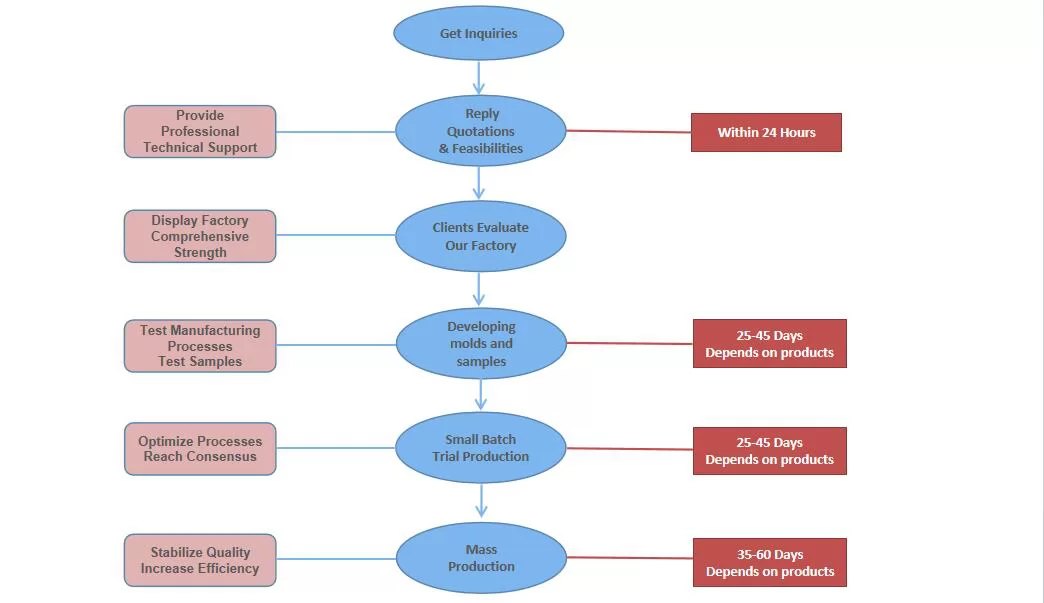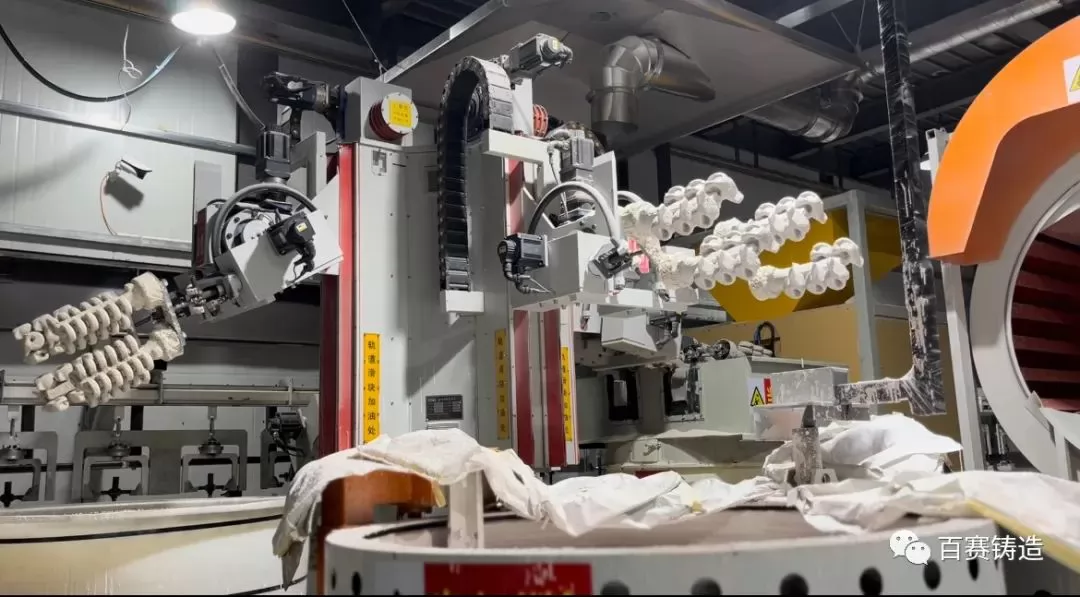This article will objectively state the time and tests required for each casting project from inquiry to batch landing from every process of business development.

1. Inquiry costs are high
First of all, it is a matter of extremely time, energy and financial resources to find inquiries from potential customers in the vast market.
The ways we let customers know about us include 1) introductions from customers and friends, 2) websites, 3) exhibitions, 4) official blog posts, etc.
Generally speaking, when a salesperson gets an inquiry, tens of thousands of yuan may have been spent behind the inquiry. Therefore, responding to quotations seriously and quickly is an essential quality of our team.
2. 24-hour quotation response, providing professional technical support
When we receive an inquiry, there may be 5-20 other factories that receive this inquiry. What makes us stand out in the customer's evaluation is another challenge. This challenge can roughly be divided into three aspects:
1) The communication skills of the salesman
2) Professional competence of technicians
Propose accurate quotations and preliminary technical suggestions for development projects. Customer engineers generally have limited understanding of the casting process, so the opinions of the technicians in the foundry are also valued by the customer engineers.
3) The comprehensive strength of the factory. After receiving the inquiry, the customer will generally choose 30%-50% of the factory for on-site inspection. The comprehensive factors such as the scale of the factory, personnel, management ability, etc. will be equal to the price factor to determine the customer's judgment and decision.
3. Customer on-site inspection, factory comprehensive strength display
Generally speaking, it will take 1-3 months from receiving the inquiry to the customer's on-site inspection of the factory, which generally depends on the progress of the client project. Sometimes when an inquiry is received, the customer only has a preliminary plan for the project, and when the customer comes to visit the site, the project is already in the third or fourth design version.
4. Mold development, sample development
When a client signs a development agreement, you might think that the business has finally landed, and that would be a little naive.
Because the project needs mold development, sample development, small batch trial production from development to mass production, and there are many links that need to be communicated and adjusted. Individual powerful customers will choose 2-3 suppliers to develop at the same time, and finally determine the batch supplier through the quality of samples and small batch products. This is also the way for large customers to control risks.
After signing the mold development agreement and receiving the mold payment, we can start to develop molds and samples intensively.
Normally, it takes about 20 days for the development of automatic molds or large molds, 5-7 days for internal samples of products with simple structures, 10-15 days for internal samples with complex structures or large products, and 5-10 days for trial production of machining according to different processing difficulties. Therefore, it takes 25-45 days from the early mold development to the sample completion.
When we send out the sample and provide the full-size report and chemical composition report of the sample to the customer, the customer needs to spend a certain amount of time for assembly testing, some for functional testing, some for service life testing, etc. In general, the time to receive sample quality feedback is one to several weeks, but for some projects it will be several months, or even half a year to one year.
Not all samples will have batch feedback after submission. Some samples are submitted like nothing, and the client will give up the development of new projects for various reasons, such as the product itself is not competitive, and the market feedback is negative.
5. Trial production in small batches, optimize the process, and reach a consensus
And samples with positive feedback, generally before mass production, we will ask to have a small batch production. Small batch production is not only a requirement of our customers, but also a requirement of our foundry. As we all know, investment castings are not perfect products. Investment castings are products with a range of tolerances, surface roughness, and surface defects. Therefore, small batch production is an important link to allow customers and casting factories to reach a consensus on products in addition to drawings.
Without a consensus on product quality, there may be a high rate of return and scrap, which is a delay in delivery for customers and a huge loss for foundries.
6. Mass production, stable quality, shorten delivery time
After the small batch trial production, the product officially entered the mass production. All the energy and time investment in the early stage can be said to have finally entered the return link. But if we take it lightly at this time, the larger the batch, the greater the loss for our foundry.
There are more than 20 links in the production process of silica sol precision casting. Any problem in any link may cause the product to be scrapped. And each batch may experience different mistakes. To make a small product with high quality, high stability, and short delivery time requires continuous internal trial and error, continuous optimization, and continuous improvement.
So when we see that a project of 500,000 pieces a year is being produced smoothly, behind this is at least two years of hard work, with lessons learned, losses, new skills learned continuously, and new heights of craftsmanship constantly explored.
After reading this article, are you a little daunted, this business is too difficult to do. But there is a good saying, I hope we can become the most certain factor in this uncertain business environment.
In every week full of good news and bad news, we are working towards our clear goals, correcting our mentality and making continuous efforts.




